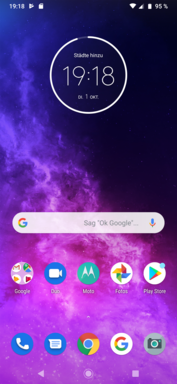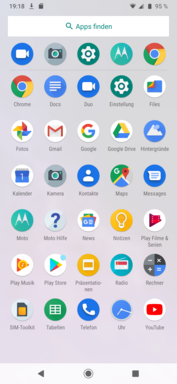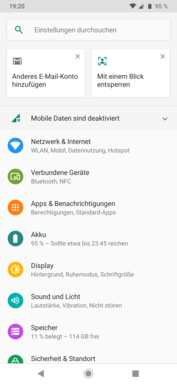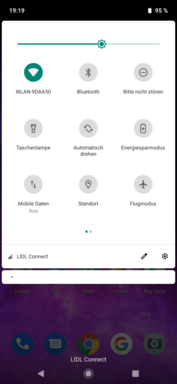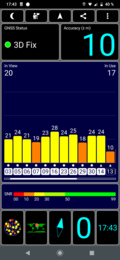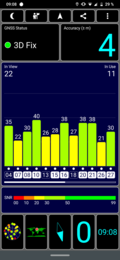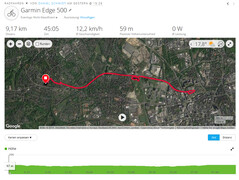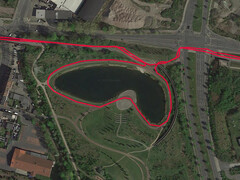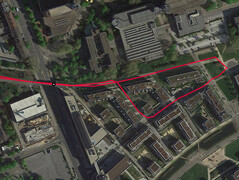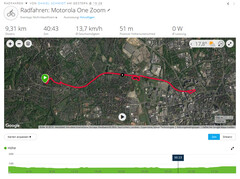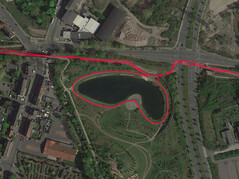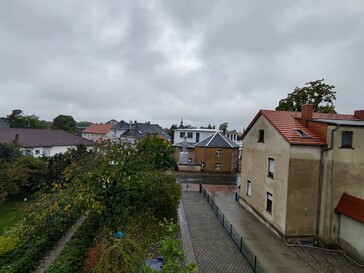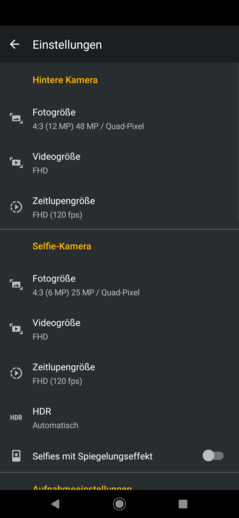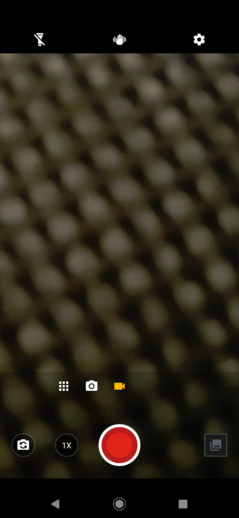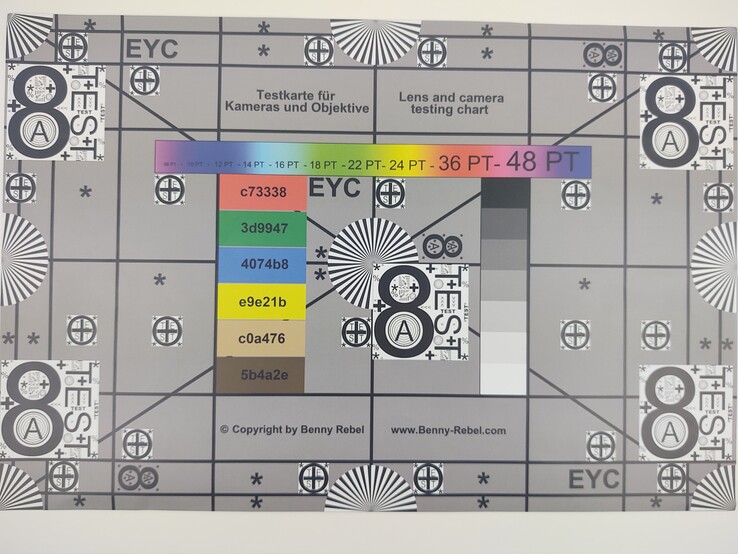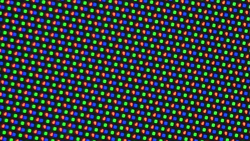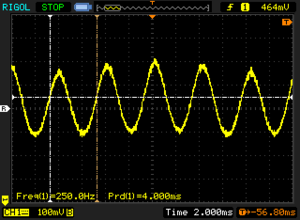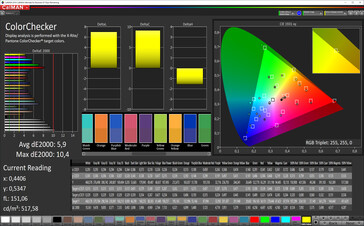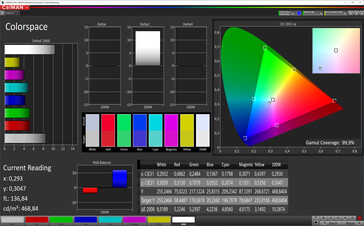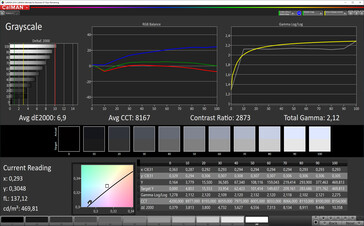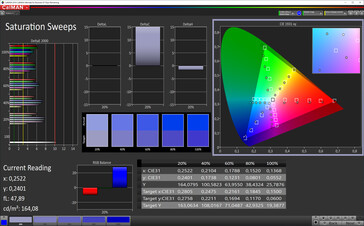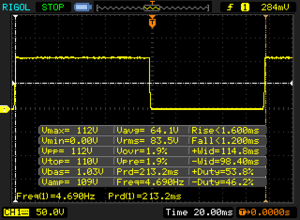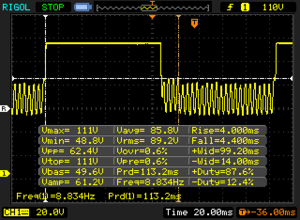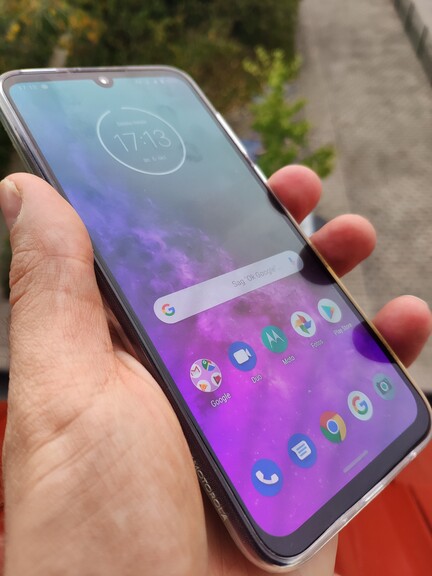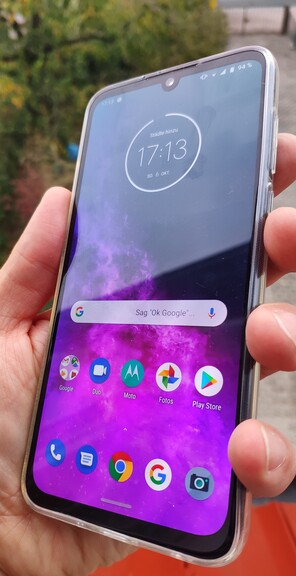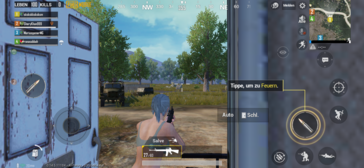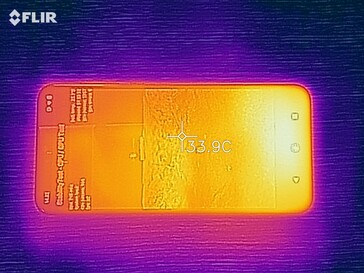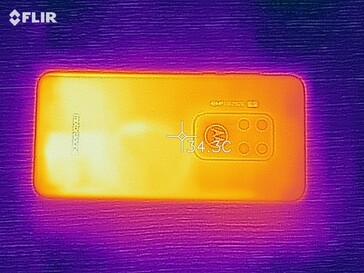Test Motorola One Zoom Smartphone: das Motorola-One-Handy, was eigentlich keines ist…
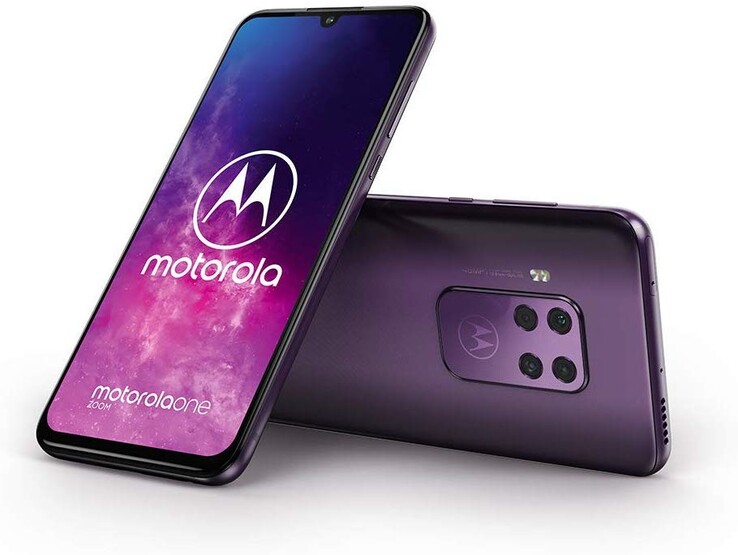
Das Motorola One Zoom unterscheidet sich von der von uns bereits getesteten Motorola-One-Reihe One Vision und One Action deutlich. So ist die UVP mit 430 Euro deutlich höher angesetzt als bei den bisherigen Mittelklasse-Handys der One-Reihe, auch das bisher namensprägende Android One fehlt dem One Zoom. Stattdessen kommt Android 9.0 mit einer schlanken Herstelleroberfläche zum Einsatz. Auch das bisher typische 21:9-Displayformat sowie die LCD-Technologie wurde beim neusten Motorola-One-Sprössling gegen einen OLED-Bildschirm im Format 19,5:9 ersetzt.
Das Highlight des One Zoom ist das Quad-Kamerasystem auf der Rückseite sowie die 25 MP-Frontcam, was in Summe gute Voraussetzungen für hervorragende Fotos in der Mittelklasse mitbringt.
Bew. | Datum | Modell | Gewicht | Dicke | Größe | Auflösung | Preis ab |
|---|---|---|---|---|---|---|---|
| 79 % v7 (old) | 10 / 2019 | Motorola One Zoom SD 675, Adreno 612 | 190 g | 8.8 mm | 6.40" | 2340x1080 | |
| 88.6 % v6 (old) | 08 / 2019 | Xiaomi Mi 9T Pro SD 855, Adreno 640 | 191 g | 8.8 mm | 6.39" | 2340x1080 | |
| 87.2 % v6 (old) | 07 / 2019 | Samsung Galaxy A80 SD 730, Adreno 618 | 220 g | 9.3 mm | 6.70" | 2400x1080 | |
| 85.1 % v7 (old) | 06 / 2019 | OnePlus 7 SD 855, Adreno 640 | 182 g | 8.2 mm | 6.41" | 2340x1080 | |
| 85.7 % v7 (old) | 07 / 2019 | LG G8s ThinQ SD 855, Adreno 640 | 181 g | 7.99 mm | 6.20" | 2248x1080 | |
| 86 % v7 (old) | 07 / 2019 | Asus ZenFone 6 ZS630KL SD 855, Adreno 640 | 190 g | 9.2 mm | 6.40" | 2340x1080 | |
| 86.1 % v6 (old) | 06 / 2019 | Samsung Galaxy A70 SD 675, Adreno 612 | 183 g | 7.9 mm | 6.70" | 2400x1080 | |
| 80.6 % v7 (old) | 05 / 2019 | Google Pixel 3a XL SD 670, Adreno 616 | 167 g | 8.2 mm | 6.00" | 2160x1080 |
Gehäuse - One Zoom mit schöner Optik, aber störender Kameraabdeckung
Das satinierte Glas auf der Rückseite kaschiert Fingerabdrücke sehr gut, ist bei trockenen Händen aber relativ rutschig. Eine IP-Zertifizierung besitzt das One-Smartphone nicht, einen flüssigkeitsabweisenden Nano-Beschichtungsschutz aber schon, welches das Telefon laut Hersteller vor verschüttetem Wasser und Spritzern schützt. Zum ersten Mal dient das Motorola-Logo auf der Rückseite als Status-LED für Benachrichtigungen. Die transparente Abdeckung des Logos sowie der Kameras ist aus haptischen Gründen aber gewöhnungsbedürftig.
Ausstattung - Motorola-Handy mit 3,5 mm Klinke
Zur Ausstattung des One Zoom gehören ein FM-Radio und eine 3,5 mm Klinke. Der interne UFS-Speicher umfasst eine Kapazität von 128 GB, wobei dem Nutzer im Auslieferungszustand nur etwa 104 GB zur freien Verfügung stehen. Wem der Speicherplatz nicht genügt, kann eine microSD-Karte in das Moto-Handy einsetzen. Mittels OTG-Adapter lassen sich aber Peripheriegeräte, u. a. auch USB-Sticks, über den USB-Port verbinden.
Software - kein Android One im Moto-Smartphone
Kommunikation und GPS - Motorola One mit NFC
Motorola setzt beim One Zoom auf Bluetooth in der Version 5.0. Auch die Möglichkeit der Near-Field-Communication ist gegeben.
Das integrierte WLAN-Modul beherrscht den IEEE-802.11-Standard nach a/b/g/n/ac und funkt im 2,4-GHz- wie auch im 5-GHz-Frequenzbereich. In der alltäglichen Nutzung ist die Empfangsleistung des WLAN-Moduls gut und das Signal stabil. Im Zusammenspiel mit unserem Referenzrouter Linksys EA8500 kommt das gehobene Mittelklasse-Handy auf für diese Preisklasse unterdurchschnittliche Übertragungsraten von etwa 250 bis 350 MBit/s.
Ins mobile Internet geht das Dual-SIM-Smartphone mit bis zu 600 MBit/s (LTE.Cat12) in den Downloads und deckt alle für Deutschland relevanten LTE-Frequenzen, in Summe 15 LTE-Bänder, ab.
Das GPS-Modul findet im Freien verzögerungsfrei die aktuelle Position bei einer Genauigkeit von 4 Metern. Auch im Gebäude ist eine Positionsbestimmung möglich.
Um uns einen besseren Überblick über die GPS-Leistungsfähigkeit zu verschaffen, nehmen wir unser One Zoom auf eine Radtour mit. Auf der Teststrecke kann das Moto-Handy mit geringer Abweichung zum Garmin Edge 500 sowie solider Routengenauigkeit überzeugen.
Telefonfunktionen und Sprachqualität - One Zoom mit VoLTE und WLAN-Anrufe
Kameras - One Zoom mit durchwachsener Kameraleistung
Die optisch stabilisierte 48-Megapixel-Hauptkamera des One Zoom basiert auf den Isocell-Bright-GM1-Sensor von Samsung. Die, infolge des 4-in-1-Pixel-Binnings entstehenden, 12-Megapixel-Aufnahmen bilden Motive natürlich und ansprechend ab, angesichts der UVP von über 400 Euro lässt es die Hauptkamera des One Zoom aber vor allem an Schärfe und Dynamik vermissen. Insbesondere bei schlechter Ausleuchtung erzeugt der Isocell-Bright-GM1-Sensor viel Rauschen und Unschärfe.
Zusätzlich greift das Motorola-Smartphone auf eine 16-Megapixel-117°-Ultra-Weitwinkel-Cam sowie auf eine 8-Megapixel-3-fach-Zoom-Optik zurück. Beide können mit einer guten Fotoqualität punkten, die im Vergleich zum 48-MP-Samsung-Bildsensor nur geringfügig abfällt.
Für das Sammeln von Tiefeninformationen arbeitet ein 5-Megapixel-Sensor mit der Hauptkamera zusammen, um den Hintergrund in Unschärfe zu setzen. Letzteres kann, ähnlich wie der Live-Fokus bei Samsung-Modellen, nach dem Fotografieren verändert werden und überzeugt bei unseren Testaufnahmen durch einen schönen Bokeh-Effekt.
Die 25-Megapixel-Frontkamera des Motorola One Zoom beherrscht ebenfalls die Quad-Pixel-Technologie, um eine höhere Lichtempfindlichkeit zu bieten. Die Selfie-Aufnahmen mit rund 6 MP sind scharf und detailreich, verlieren aber bei wenig Licht schnell an Qualität.
Bildervergleich
Wählen Sie eine Szene und navigieren Sie im ersten Bild. Ein Klick ändert die Position bei Touchscreens. Ein Klick auf die vergrößerten Bilder öffnet das Original in einem neuen Fenster. Das erste Bild zeigt das skalierte Foto, welches mit dem Testgerät aufgenommen wurde.
Szene 1Szene 2Szene 3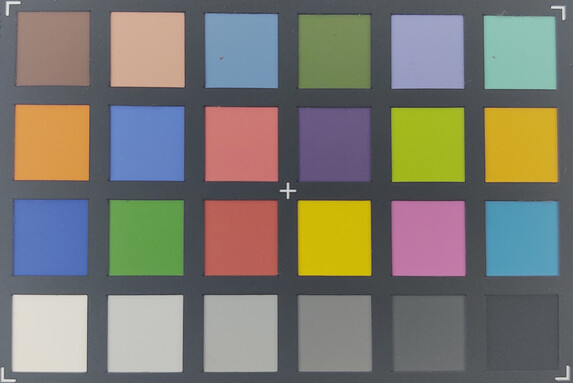
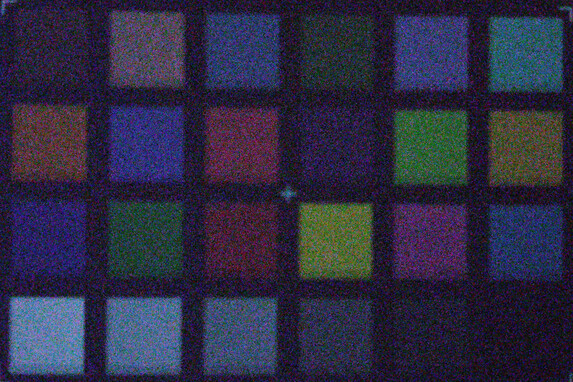
Zubehör und Garantie - Moto One Zoom mit viel Zubehör
Im Lieferumfang befinden sich ein modulares 18-Watt-Netzteil, ein passendes USB-Kabel, ein SIM-Werkzeug sowie eine Kurzanleitung, ein Silikon-Case und Kopfhörer.
Motorola gewährt eine 24-monatige Garantie auf sein Moto-Smartphone.
Eingabegeräte & Bedienung - Fingerabdrucksensor im One Zoom enttäuscht
Für das Entsperren des Motorola-Smartphones kann auf eine biometrische Identifikation per Gesicht zurückgegriffen werden. Die relativ unsichere 2D-Gesichtserkennung mittels Frontcam erkennt den Nutzer zuverlässig und schnell.
Im Display des One Zoom versteckt sich außerdem ein optischer Fingerabdrucksensor. Im Gegensatz zur FaceUnlock-Funktion ist die Erkennungsrate schlecht und auch nicht wirklich schnell. Laut Motorola unterstützt der Fingerabdrucksensor ein kontinuierliches Lernen durch einen maschinellen Algorithmus, sodass er mit der Zeit etwas schneller und genauer werden soll. In der gegenwärtigen Softwareversion ist der In-Display-Fingerabdrucksensor jedoch wenig brauchbar.
Display - Motorola-One-Handy mit OLED-Panel
Das 6,4 Zoll große OLED-Display im One Zoom löst mit 2.340 x 1.080 Bildpunkten auf und kommt somit auf eine Pixeldichte von gut 400 PPI. Da organische Leuchtdioden nahezu nie mit ihrer maximalen Helligkeit strahlen, wird die Leuchtdichte reduziert. Zur Steuerung der Displayhelligkeit setzt Motorola auf die Pulsweitenmodulation (PWM). Ein Bildschirmflackern stellen wir bereits bei maximaler Bildschirmhelligkeit fest. Die Frequenz des Flackerns liegt zwischen 235 Hz und 250 Hz, was bei empfindlichen Anwendern Probleme wie Kopfschmerzen oder Schwindel hervorrufen kann.
Die maximale Helligkeit bei einem reinweißen Bildschirmhintergrund ist mit 461 cd/m² nur durchschnittlich. Mit aktiviertem Umgebungslichtsensor zur Steuerung der Displayhelligkeit messen wir eine Luminanz von 471 cd/m². Zusätzlich überprüfen wir im Test die Leuchtkraft des Panels bei einem gleichmäßig verteilten Anteil von dunklen zu hellen Flächen (APL 50). Hierbei haben wir eine maximale Helligkeit von 608 cd/m² ermittelt.
| |||||||||||||||||||||||||
Ausleuchtung: 95 %
Helligkeit Akku: 461 cd/m²
Kontrast: ∞:1 (Schwarzwert: 0 cd/m²)
ΔE ColorChecker Calman: 5.9 | ∀{0.5-29.43 Ø4.78}
ΔE Greyscale Calman: 6.9 | ∀{0.09-98 Ø5}
Gamma: 2.12
CCT: 8167 K
| Motorola One Zoom OLED, 2340x1080, 6.4" | Xiaomi Mi 9T Pro AMOLED, 2340x1080, 6.4" | Samsung Galaxy A80 AMOLED, 2400x1080, 6.7" | OnePlus 7 AMOLED, 2340x1080, 6.4" | LG G8s ThinQ P-OLED, 2248x1080, 6.2" | Asus ZenFone 6 ZS630KL IPS, 2340x1080, 6.4" | Samsung Galaxy A70 Super AMOLED, 2400x1080, 6.7" | Google Pixel 3a XL OLED, 2160x1080, 6" | |
|---|---|---|---|---|---|---|---|---|
| Bildschirm | 42% | 21% | 31% | 28% | 22% | 25% | 35% | |
| Helligkeit Bildmitte (cd/m²) | 461 | 594 29% | 478 4% | 603 31% | 539 17% | 569 23% | 554 20% | 409 -11% |
| Brightness (cd/m²) | 472 | 607 29% | 486 3% | 605 28% | 556 18% | 537 14% | 552 17% | 410 -13% |
| Brightness Distribution (%) | 95 | 91 -4% | 96 1% | 94 -1% | 88 -7% | 79 -17% | 98 3% | 96 1% |
| Schwarzwert * (cd/m²) | 0.31 | |||||||
| Delta E Colorchecker * | 5.9 | 1.51 74% | 2.97 50% | 3.5 41% | 3.78 36% | 3.5 41% | 3.3 44% | 1.3 78% |
| Colorchecker dE 2000 max. * | 10.4 | 4.27 59% | 10.18 2% | 7.7 26% | 6.95 33% | 6 42% | 9.2 12% | 2.3 78% |
| Delta E Graustufen * | 6.9 | 2.6 62% | 2.5 64% | 2.7 61% | 2.2 68% | 5.1 26% | 3.4 51% | 1.5 78% |
| Gamma | 2.12 104% | 2.219 99% | 2.031 108% | 2.266 97% | 2.274 97% | 2.36 93% | 2.08 106% | 2.22 99% |
| CCT | 8167 80% | 6390 102% | 6533 99% | 6775 96% | 6013 108% | 6827 95% | 6606 98% | 6621 98% |
| Kontrast (:1) | 1835 |
* ... kleinere Werte sind besser
Bildschirm-Flackern / PWM (Pulse-Width Modulation)
| Flackern / PWM festgestellt | 250 Hz | ≤ 99 % Helligkeit | |
Das Display flackert mit 250 Hz (im schlimmsten Fall, eventuell durch Pulsweitenmodulation PWM) bei einer eingestellten Helligkeit von 99 % und darunter. Darüber sollte es zu keinem Flackern kommen. Die Frequenz von 250 Hz ist relativ gering und daher sollte es bei sensiblen Personen zu Problemen wie Flackern oder Augenbeschwerden führen. Im Vergleich: 53 % aller getesteten Geräte nutzten kein PWM um die Helligkeit zu reduzieren. Wenn PWM eingesetzt wurde, dann bei einer Frequenz von durchschnittlich 8108 (Minimum 5, Maximum 343500) Hz. | |||
Das Display des One Zoom ist kontrastreich, da technologiebedingt bei OLED-Panels das Kontrastverhältnis theoretisch gegen unendlich tendiert. Die Analyse des Fotospektrometers und der CalMAN-Software ergibt mit 5,9 (Farben) beziehungsweise 6,9 (Graustufen) hohe durchschnittliche Delta-E-Abweichungen zum sRGB-Farbraum, bei einem Idealbereich von Werten < 3. Auch die Farbtemperatur trifft das One Zoom nicht wirklich perfekt.
Reaktionszeiten (Response Times) des Displays
| ↔ Reaktionszeiten Schwarz zu Weiß | ||
|---|---|---|
| 2.8 ms ... steigend ↗ und fallend ↘ kombiniert | ↗ 1.6 ms steigend | |
| ↘ 1.2 ms fallend | ||
| Die gemessenen Reaktionszeiten sind sehr kurz, wodurch sich der Bildschirm auch für schnelle 3D Spiele eignen sollte. Im Vergleich rangierten die bei uns getesteten Geräte von 0.1 (Minimum) zu 240 (Maximum) ms. » 12 % aller Screens waren schneller als der getestete. Daher sind die gemessenen Reaktionszeiten besser als der Durchschnitt aller vermessenen Geräte (20.2 ms). | ||
| ↔ Reaktionszeiten 50% Grau zu 80% Grau | ||
| 8.4 ms ... steigend ↗ und fallend ↘ kombiniert | ↗ 4 ms steigend | |
| ↘ 4.4 ms fallend | ||
| Die gemessenen Reaktionszeiten sind kurz wodurch sich der Bildschirm auch für Spiele gut eignen sollte. Im Vergleich rangierten die bei uns getesteten Geräte von 0.165 (Minimum) zu 636 (Maximum) ms. » 21 % aller Screens waren schneller als der getestete. Daher sind die gemessenen Reaktionszeiten besser als der Durchschnitt aller vermessenen Geräte (31.6 ms). | ||
Leistung - Qualcomm Snapdragon 675 im One Zoom mit Luft nach oben
Der Qualcomm Snapdragon 675 im One Zoom bietet zwei Cortex-A76-Kerne sowie 6 Cortex-A55-Stromsparkerne. Neben den CPU-Kernen integriert der Snapdragon 675 eine Adreno-612-Grafikkarte.
Die Systemperformance ist dank der schlanken UI gut, im Alltag zeigen trotz sich angepasster Software dennoch ab und an Ruckler und kleine Verzögerungen. Wie die synthetischen Benchmarks offenbaren, bildet die Leistung des Snapdragon 675 das Schlusslicht in unserem Vergleich. Im Zusammenspiel mit 4 GB RAM kann das Motorola One Zoom auch in den Browser-Benchmarks nicht mit der leistungsstarken Snapdragon-Konkurrenz mithalten.
Der interne UFS-Speicher ist relativ schnell, die hohen Speichergeschwindigkeiten eines OnePlus 7 oder auch Xiaomi Mi 9T Pro werden mit dem Moto-Handy aber nicht erreicht.
| Jetstream 2 - 2.0 Total Score | |
| Durchschnitt der Klasse Smartphone (23.8 - 387, n=149, der letzten 2 Jahre) | |
| OnePlus 7 (Chrome 74) | |
| Asus ZenFone 6 ZS630KL (Chrome 75) | |
| Xiaomi Mi 9T Pro (Chrome 75) | |
| LG G8s ThinQ (Chrome 75) | |
| Motorola One Zoom (Chrome 77) | |
| Durchschnittliche Qualcomm Snapdragon 675 (43.4 - 44.9, n=2) | |
| Samsung Galaxy A70 (Chrome 74.0.3729.157) | |
| Samsung Galaxy A80 (Chrome 75) | |
| Google Pixel 3a XL (Chrome 73) | |
| JetStream 1.1 - Total Score | |
| OnePlus 7 (Chrome 74) | |
| Asus ZenFone 6 ZS630KL (Chrome 75) | |
| Xiaomi Mi 9T Pro | |
| LG G8s ThinQ (Chrome 75) | |
| Motorola One Zoom (Chrome 77) | |
| Durchschnittliche Qualcomm Snapdragon 675 (80.8 - 80.9, n=2) | |
| Samsung Galaxy A70 (Chrome 74.0.3729.157) | |
| Samsung Galaxy A80 (Chrome 75) | |
| Google Pixel 3a XL (Chrome 73) | |
| WebXPRT 3 - Overall | |
| Durchschnitt der Klasse Smartphone (38 - 380, n=31, der letzten 2 Jahre) | |
| OnePlus 7 (Chrome 74) | |
| Asus ZenFone 6 ZS630KL (Chrome 75) | |
| LG G8s ThinQ (Chrome 75) | |
| Xiaomi Mi 9T Pro (Chrome 75) | |
| Samsung Galaxy A70 (Chrome 74.0.3729.157) | |
| Samsung Galaxy A80 (Chrome 75) | |
| Durchschnittliche Qualcomm Snapdragon 675 (70 - 82, n=2) | |
| Motorola One Zoom (Chrome 77) | |
| Google Pixel 3a XL (Chrome 73) | |
| Octane V2 - Total Score | |
| Durchschnitt der Klasse Smartphone (2228 - 121337, n=197, der letzten 2 Jahre) | |
| OnePlus 7 (Chrome 74) | |
| Asus ZenFone 6 ZS630KL (Chrome 75) | |
| LG G8s ThinQ (Chrome 75) | |
| Xiaomi Mi 9T Pro (Chrome 75) | |
| Samsung Galaxy A80 (Chrome 75) | |
| Samsung Galaxy A70 (Chrome 74.0.3729.157) | |
| Durchschnittliche Qualcomm Snapdragon 675 (15689 - 15716, n=2) | |
| Motorola One Zoom (Chrome 77) | |
| Google Pixel 3a XL (Chrome 73) | |
| Mozilla Kraken 1.1 - Total | |
| Google Pixel 3a XL (Chrome 73) | |
| Samsung Galaxy A80 (Chrome 75) | |
| Motorola One Zoom (Chrome 77) | |
| Durchschnittliche Qualcomm Snapdragon 675 (2807 - 2890, n=2) | |
| Samsung Galaxy A70 (Chrome 74.0.3729.157) | |
| Xiaomi Mi 9T Pro (Chrome 75) | |
| LG G8s ThinQ (Chrome 75) | |
| Asus ZenFone 6 ZS630KL (Chrome 75) | |
| OnePlus 7 (Chrome 74) | |
| Durchschnitt der Klasse Smartphone (257 - 28190, n=154, der letzten 2 Jahre) | |
* ... kleinere Werte sind besser
| Motorola One Zoom | Xiaomi Mi 9T Pro | Samsung Galaxy A80 | OnePlus 7 | LG G8s ThinQ | Asus ZenFone 6 ZS630KL | Samsung Galaxy A70 | Google Pixel 3a XL | Durchschnittliche 128 GB UFS 2.0 Flash | Durchschnitt der Klasse Smartphone | |
|---|---|---|---|---|---|---|---|---|---|---|
| AndroBench 3-5 | 22% | -28% | 55% | -7% | 27% | -16% | -29% | -2% | 331% | |
| Sequential Read 256KB (MB/s) | 470.5 | 809 72% | 502 7% | 1463 211% | 791 68% | 831 77% | 508 8% | 315.6 -33% | 530 ? 13% | 2228 ? 374% |
| Sequential Write 256KB (MB/s) | 256.6 | 196.9 -23% | 190.4 -26% | 392 53% | 182.4 -29% | 195.6 -24% | 194 -24% | 179.1 -30% | 212 ? -17% | 1852 ? 622% |
| Random Read 4KB (MB/s) | 134.5 | 142.5 6% | 117.5 -13% | 175.3 30% | 138 3% | 153.3 14% | 103.8 -23% | 92.1 -32% | 130.6 ? -3% | 296 ? 120% |
| Random Write 4KB (MB/s) | 110.8 | 148.5 34% | 21.6 -81% | 28.7 -74% | 29.6 -73% | 160.2 45% | 21.95 -80% | 87 -21% | 101.2 ? -9% | 339 ? 206% |
| Sequential Read 256KB SDCard (MB/s) | 69.4 ? | 67.5 ? -3% | 87 ? 25% | 76.2 ? 10% | 68.3 ? -2% | |||||
| Sequential Write 256KB SDCard (MB/s) | 51.2 ? | 46.7 ? -9% | 62.5 ? 22% | 58.8 ? 15% | 53.2 ? 4% |
Spiele - Adreno 612 im One Zoom nur für Einsteigergames
Emissionen - One Zoom mit gutem Monolautsprecher
Temperatur
Die Oberflächentemperaturen sind in unseren Messungen niedrig und eine fühlbare Temperaturentwicklung zeigt sich im Alltag kaum.
(+) Die maximale Temperatur auf der Oberseite ist 35.1 °C. Im Vergleich liegt der Klassendurchschnitt bei 35.2 °C (von 21.9 bis 247 °C für die Klasse Smartphone).
(+) Auf der Unterseite messen wir eine maximalen Wert von 33.5 °C (im Vergleich zum Durchschnitt von 34 °C).
(+) Ohne Last messen wir eine durchschnittliche Temperatur von 28.2 °C auf der Oberseite. Der Klassendurchschnitt erreicht 32.9 °C.
Lautsprecher
Motorola One Zoom Audio Analyse
(±) | Mittelmäßig laut spielende Lautsprecher (80 dB)
Bass 100 - 315 Hz
(-) | kaum Bass - 17.1% niedriger als der Median
(±) | durchschnittlich lineare Bass-Wiedergabe (13.4% Delta zum Vorgänger)
Mitteltöne 400 - 2000 Hz
(±) | zu hohe Mitten, vom Median 5.4% abweichend
(+) | lineare Mitten (5.6% Delta zum Vorgänger)
Hochtöne 2 - 16 kHz
(±) | zu hohe Hochtöne, vom Median nur 5.3% abweichend
(+) | sehr lineare Hochtöne (6.3% Delta zum Vorgänger)
Gesamt im hörbaren Bereich 100 - 16.000 Hz
(±) | hörbarer Bereich ist durchschnittlich linear (19.6% Abstand zum Median)
Im Vergleich zu allen Geräten derselben Klasse
» 29% aller getesteten Geräte dieser Klasse waren besser, 8% vergleichbar, 63% schlechter
» Das beste Gerät hat einen Delta-Wert von 11%, durchschnittlich ist 35%, das schlechteste Gerät hat 134%
Im Vergleich zu allen Geräten im Test
» 48% aller getesteten Geräte waren besser, 7% vergleichbar, 44% schlechter
» Das beste Gerät hat einen Delta-Wert von 4%, durchschnittlich ist 24%, das schlechteste Gerät hat 134%
Xiaomi Mi 9T Pro Audio Analyse
(+) | Die Lautsprecher können relativ laut spielen (87.9 dB)
Bass 100 - 315 Hz
(-) | kaum Bass - 80.4% niedriger als der Median
(+) | lineare Bass-Wiedergabe (0% Delta zum Vorgänger)
Mitteltöne 400 - 2000 Hz
(-) | kaum Mitten, vom Median 80.4% abweichend
(+) | lineare Mitten (0% Delta zum Vorgänger)
Hochtöne 2 - 16 kHz
(-) | kaum Hochtöne, 80.4% geringer als der Median
(+) | sehr lineare Hochtöne (0% Delta zum Vorgänger)
Gesamt im hörbaren Bereich 100 - 16.000 Hz
(-) | hörbarer Bereich ist nur wenig linear (115.6% Abstand zum Median)
Im Vergleich zu allen Geräten derselben Klasse
» 87% aller getesteten Geräte dieser Klasse waren besser, 4% vergleichbar, 9% schlechter
» Das beste Gerät hat einen Delta-Wert von 11%, durchschnittlich ist 35%, das schlechteste Gerät hat 134%
Im Vergleich zu allen Geräten im Test
» 96% aller getesteten Geräte waren besser, 1% vergleichbar, 3% schlechter
» Das beste Gerät hat einen Delta-Wert von 4%, durchschnittlich ist 24%, das schlechteste Gerät hat 134%
Akkulaufzeit - 4.000-mAh-Akku im Moto-Handy überzeugt
Energieaufnahme
Die Leistungsaufnahme des One Zoom ist effizient, gerade unter Last verbrauchen die Vergleichsgeräte mehr Energie als das Moto-Handy.
| Aus / Standby | |
| Idle | |
| Last |
|
Legende:
min: | |
| Motorola One Zoom 4000 mAh | Xiaomi Mi 9T Pro 4000 mAh | Samsung Galaxy A80 3700 mAh | OnePlus 7 3700 mAh | LG G8s ThinQ 3550 mAh | Asus ZenFone 6 ZS630KL 5000 mAh | Durchschnittliche Qualcomm Snapdragon 675 | Durchschnitt der Klasse Smartphone | |
|---|---|---|---|---|---|---|---|---|
| Stromverbrauch | -10% | 0% | -4% | -40% | -40% | -6% | -37% | |
| Idle min * (Watt) | 0.69 | 0.7 -1% | 0.6 13% | 0.6 13% | 1.2 -74% | 0.81 -17% | 0.693 ? -0% | 0.842 ? -22% |
| Idle avg * (Watt) | 1.54 | 1 35% | 1.2 22% | 1.1 29% | 1.6 -4% | 2.35 -53% | 1.8 ? -17% | 1.439 ? 7% |
| Idle max * (Watt) | 1.57 | 1.3 17% | 1.4 11% | 2 -27% | 2 -27% | 2.37 -51% | 1.867 ? -19% | 1.624 ? -3% |
| Last avg * (Watt) | 4.1 | 5.2 -27% | 5 -22% | 4 2% | 5 -22% | 5.33 -30% | 4.03 ? 2% | 7.03 ? -71% |
| Last max * (Watt) | 5.79 | 10 -73% | 7.1 -23% | 8 -38% | 10 -73% | 8.55 -48% | 5.63 ? 3% | 11.3 ? -95% |
* ... kleinere Werte sind besser
Akkulaufzeit
Der 4.000 mAh starke Akku verhilft dem One Zoom zu einer guten Laufzeit von über 10,5 Stunden in unserem WLAN-Test mit einer Displayhelligkeit von 150 cd/m². Aufgeladen ist das Moto-Handy in 2 Stunden.
| Motorola One Zoom 4000 mAh | Xiaomi Mi 9T Pro 4000 mAh | Samsung Galaxy A80 3700 mAh | OnePlus 7 3700 mAh | LG G8s ThinQ 3550 mAh | Asus ZenFone 6 ZS630KL 5000 mAh | |
|---|---|---|---|---|---|---|
| Akkulaufzeit | ||||||
| WLAN (h) | 10.7 | 12.7 19% | 11.9 11% | 15 40% | 11.6 8% | 13.4 25% |
Pro
Contra
Fazit - Die Bürde einer zu hohen UVP in der Smartphone-Mittelklasse
Mit dem One Zoom greift Motorola zwar nicht die Tugenden der bisherigen One-Reihe auf, dennoch weist der neueste Motorola-Sprössling ein rundes Gesamtpaket auf – allerdings nicht für die vom Hersteller anvisierte UVP von über 400 Euro.
Ähnlich wie bei den Pixel-3a-Smartphones von Google, fällt die Wahl des Prozessors auch beim One Zoom zu leistungsschwach für die gehobene Mittelklasse, fast schon Oberklasse, im Jahr 2019 aus - wobei sich die Pixel-Geräte durch gute Stereolautsprecher, Stock-Android und sehr gute Kameras von der Konkurrenz abheben. Alles Punkte die dem One Zoom fehlen.
Motorola zeigt wieder einmal, dass sie gute Mittelklasse-Handys bauen können. Im Preisbereich um die 300 bis 350 Euro ist das One Zoom eine gute Wahl.
Dennoch ist der neuste Vertreter der One-Reihe durch sein schönes OLED-Panel, dem ansprechenden Design, guter Ausstattung sowie ordentlicher Performance keine schlechte Wahl und kann durchaus mit einem Xiaomi Mi 9T konkurrieren. Allerdings ist letzteres gegenwärtig noch preislich deutlich attraktiver und selbst die Pro-Version des Preis-Leistungs-Krachers noch merklich günstiger als das One Zoom zu haben.
Motorola One Zoom
- 03.09.2022 v7 (old)
Marcus Herbrich, Daniel Schmidt






